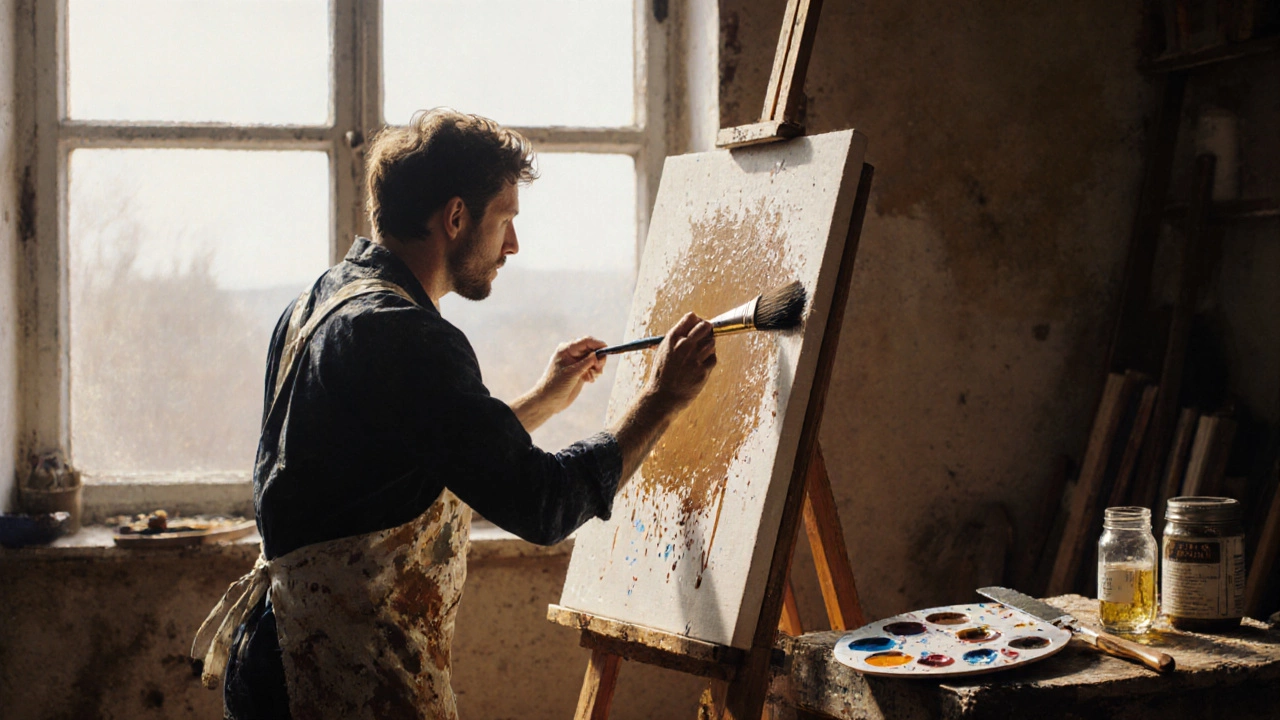Alla Prima Explained: The Direct Wet‑on‑Wet Painting Technique
9 Oct 2025Learn what the alla prima technique is, its history, essential tools, step‑by‑step workflow, pros, cons, and tips for mastering wet‑on‑wet painting.
Continue reading...When working with oil painting method, a systematic approach artists use to apply, manipulate, and finish oil paints on a support. Also known as oil painting technique, it guides everything from canvas prep to final varnish. In the same breath, we meet glazing, a thin, transparent layer of paint that shifts color and adds depth, scumbling, a dry‑brush overlay that creates texture and light effects, and color mixing, the process of blending pigments to achieve desired hues and values. Oil painting method isn’t just a buzzword; it shapes how artists plan, layer, and troubleshoot their work.
The oil painting method embraces several key practices. First, glazing lets you build luminous tones without muddying colors—think of it as a watercolor layer over a solid base. Artists often glaze with a medium like linseed oil to control drying time, letting the underlying paint breathe. Next, scumbling adds a rough, semi‑opaque finish that catches light; it’s perfect for hazy skies or weathered surfaces. Both glazing and scumbling rely on proper color mixing—knowing how to shift temperature, saturation, and value ensures each layer contributes to the final image rather than turning it chaotic. The method also includes underpainting (a monochrome sketch that sets tonal values) and fat‑over‑lean rules, which dictate that later layers should contain more oil than earlier ones to prevent cracking. Together, these elements create a reliable workflow that balances creativity with technical stability.
Even the best‑planned method hits snags. Common issues include wet‑on‑wet muddiness, tacky surfaces, or dried paint that refuses to lift. The oil painting method addresses these with specific fixes: for wet mistakes, gently wipe with a soft cloth or use a solvent dab; for tacky layers, apply a light glaze to even out drying; and for dry errors, scrape gently and re‑ground the area before rebuilding. Knowing when to “scrape vs. glaze” is a practical skill, and many artists keep a small set of tools—palette knives, soft rags, and a reliable medium—to stay agile. This troubleshooting mindset is woven into the method, turning errors into learning moments rather than dead‑ends.
All of this ties back to the broader goal of the oil painting method: delivering consistent, vibrant results while keeping the creative flow alive. Whether you’re a beginner figuring out how to avoid a muddy sky or a seasoned painter refining your glaze recipes, the method offers a roadmap. Below you’ll find articles that dive deeper into each technique, showcase real‑world examples, and share step‑by‑step fixes for the most stubborn problems. Explore the collection to sharpen your skills, discover fresh ideas, and see how mastering these core practices can elevate every canvas you touch.

Learn what the alla prima technique is, its history, essential tools, step‑by‑step workflow, pros, cons, and tips for mastering wet‑on‑wet painting.
Continue reading...